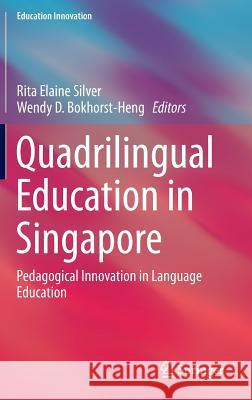Quadrilingual Education in Singapore: Pedagogical Innovation in Language Education » książka
topmenu
Quadrilingual Education in Singapore: Pedagogical Innovation in Language Education
ISBN-13: 9789812879653 / Angielski / Twarda / 2016 / 326 str.
Kategorie:
Kategorie BISAC:
Wydawca:
Springer
Seria wydawnicza:
Język:
Angielski
ISBN-13:
9789812879653
Rok wydania:
2016
Wydanie:
2016
Numer serii:
000471443
Ilość stron:
326
Waga:
0.65 kg
Wymiary:
23.39 x 15.6 x 2.06
Oprawa:
Twarda
Wolumenów:
01
Dodatkowe informacje:
Wydanie ilustrowane











